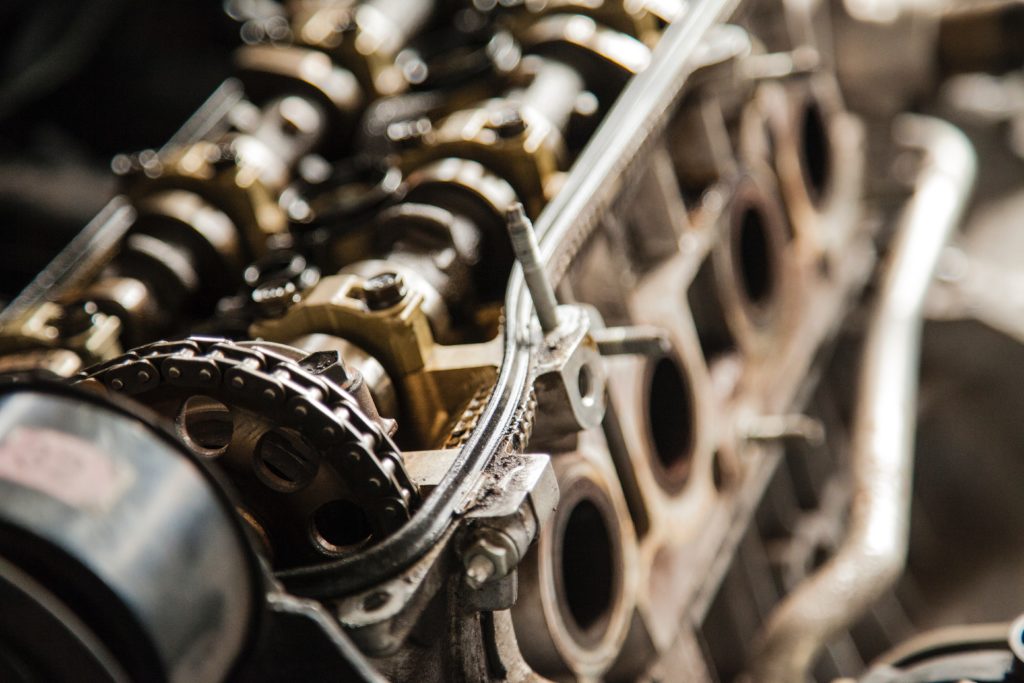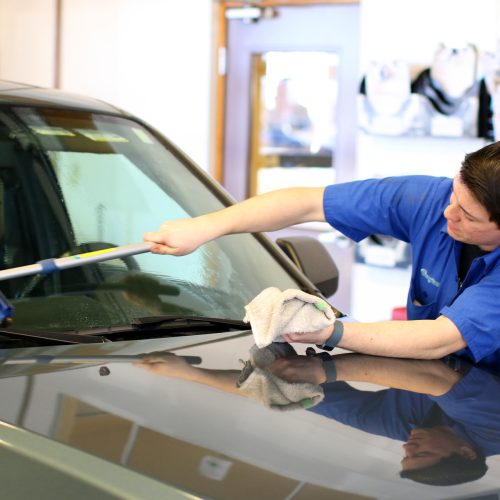
As vehicle build quality and improves and our fluids and lubricants become more and more durable, the maintenance schedules for modern vehicles have increased significantly. The old recommendation of changing your oil every 3000 miles has gone from 5,000, to 7,000, and in some cases 10,000 miles or more! If your vehicle is only seeing the repair shop every 10,000 miles for a scheduled oil change you could be missing some of the early signs of wear in other parts of the vehicle that could end up costing you down the road. We recommend getting your vehicle in for an oil change every 5,000 miles so it can get up in the air for a thorough inspection, but there are also some things you can do between those long service intervals that just might help prevent a surprise breakdown.
- Pilots walkaround – You can do this any time you like but it should at least be done every time you fill the gas tank. Look for anything out of place or hanging off. Make sure none of your lug nuts are missing and look for flat tires. Check for any body damage that may have occurred while the vehicle was parked or for some reason went unnoticed. Also check for broken light assemblies, mirrors, and glass.
- At every fill up take a minute to check your fluids and tires. Oil, coolant, power steering, and washer fluid are usually pretty easy to check. Brake fluid level will change depending on the wear on your brake pads so if you see it is a little low it doesn’t mean you need to add fluid, let your mechanic check it out before you add brake fluid. If you don’t know how to check your fluids just ask next time you are in for service, most shops would be happy to take a few minutes to show you. Keep a flash light and tire pressure gauge in your glovebox along with a small towel or rag. Check for wet spots and visible fluid leaks in the engine compartment and check the inflation pressure of your tires. You can’t always tell if a tire is low just by looking at it, it is important to use a gauge and make sure your pressure is correct after filling.
- When you park, turn your steering wheel all the way to one side. This will allow you to get a really good look at your tire wear patterns and tread depth on the front wheels. Your tread wear should be relatively even across the tire and there should be no flat spots. If you run your hand along the tire it should be flat and even with no low spots or ridges. All tires will have wear indicators of some kind that can help you determine just how low your tread is, but it’s a good idea to keep and tread depth gauge in your glovebox.
- Listen to the car, turn your radio off every now and then and just listen. Nobody knows better than you what your car should feel and sound like when everything is normal. Listen for anything unusual during your normal commute. It could be over bumps, while you are turning, or at high speed, just do your best to listen during different driving conditions and make sure the car isn’t trying to tell you something. If something seems off, make a mental note of how you were able to produce the noise so you can give your mechanic as much detail as possible and make easy for them to duplicate on their test drive.
The most important thing is just to pay attention to your vehicle and do not neglect it. If you can’t remember the last time it was up in the air it might be a good time to schedule a service appointment. Remember that a quick lube oil change will not get you a thorough inspection and should not be your primary form of vehicle maintenance. If you need more information just call your shop, most of them will be happy to help and can give you some guidance based on your personal vehicle and situation.




